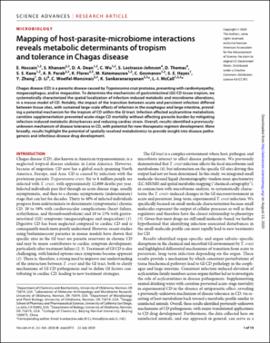| dc.contributor.author | Hossain, Ekram | |
| dc.contributor.author | Khanam, Sharmily | |
| dc.contributor.author | Dean, Danya | |
| dc.contributor.author | Wu, Si | |
| dc.contributor.author | Lostracco-Johnson, Sharon | |
| dc.contributor.author | Thomas, D. | |
| dc.contributor.author | Kane, Shelley | |
| dc.contributor.author | Parab, Adwaita | |
| dc.contributor.author | Flores, Karina | |
| dc.contributor.author | Katemauswa, Mitchelle | |
| dc.contributor.author | Gosmanov, Camil | |
| dc.contributor.author | Hayes, Stephanie E. | |
| dc.contributor.author | Zhang, Yiming | |
| dc.contributor.author | Danyang, Li | |
| dc.contributor.author | Woelfel-Monsivais, Christine | |
| dc.contributor.author | Sankaranarayanan, Krithivasan | |
| dc.contributor.author | McCall, Laura-Isobel | |
| dc.date.accessioned | 2020-08-13T16:45:11Z | |
| dc.date.available | 2020-08-13T16:45:11Z | |
| dc.date.issued | 2020-07-22 | |
| dc.identifier.citation | E. Hossain, S. Khanam, D. A. Dean, C. Wu, S. Lostracco-Johnson, D. Thomas, S. S. Kane, A. R. Parab, K. Flores, M. Katemauswa, C. Gosmanov, S. E. Hayes, Y. Zhang, D. Li, C. Woelfel-Monsivais, K. Sankaranarayanan, L.-I. McCall (2020). Mapping of host-parasite-microbiome interactions reveals metabolic determinants of tropism and tolerance in Chagas disease. Science Advances, 6(30). doi:10.1126/sciadv.aaz2015 | en_US |
| dc.identifier.uri | https://hdl.handle.net/11244/325388 | |
| dc.description.abstract | Chagas disease (CD) is a parasitic disease caused by Trypanosoma cruzi protozoa, presenting with cardiomyopathy, megaesophagus, and/or megacolon. To determine the mechanisms of gastrointestinal (GI) CD tissue tropism, we systematically characterized the spatial localization of infection-induced metabolic and microbiome alterations, in a mouse model of CD. Notably, the impact of the transition between acute and persistent infection differed between tissue sites, with sustained large-scale effects of infection in the esophagus and large intestine, providing a potential mechanism for the tropism of CD within the GI tract. Infection affected acylcarnitine metabolism; carnitine supplementation prevented acute-stage CD mortality without affecting parasite burden by mitigating infection-induced metabolic disturbances and reducing cardiac strain. Overall, results identified a previously-unknown mechanism of disease tolerance in CD, with potential for new therapeutic regimen development. More broadly, results highlight the potential of spatially resolved metabolomics to provide insight into disease pathogenesis and infectious disease drug development. | en_US |
| dc.description.sponsorship | Open Access fees paid for in whole or in part by the University of Oklahoma Libraries. This work was supported by start-up funds from the University of Oklahoma to L.-I.M. and the National Institute of Allergy and Infectious Diseases of the NIH under award number R21AI148886 to L.-I.M. Initial tissue collection was supported by a postdoctoral fellowship to L.-I.M. from the Canadian Institutes of Health Research (award number 338511; www.cihr-irsc.gc.ca/). Microbial community analysis was supported, in part, by an NIH grant (award number NIH 2R01-GM089886 to K.S). Immunological characterization was performed on instrumentation from the OU Protein Production and Characterization Core facility, supported by an Institutional Development Award (IDeA) from the National Institute of General Medical Sciences of the NIH under grant number P20GM103640. Histology samples were processed by the University of Oklahoma Health Sciences Center, Stephenson Cancer Center Tissue Pathology Shared Resource, supported by the National Cancer Institute Cancer Center Support Grant P30CA225520 and COBRE P20GM103639. The content is solely the responsibility of the authors and does not necessarily represent the official views of the NIH. | en_US |
| dc.language | en | en_US |
| dc.rights | Attribution 4.0 International | * |
| dc.rights.uri | https://creativecommons.org/licenses/by/4.0/ | * |
| dc.subject | Chagas disease | en_US |
| dc.subject | Parasite | en_US |
| dc.subject | Parasitic disease | en_US |
| dc.subject | Trypanosoma cruzi | en_US |
| dc.subject | Tropism | en_US |
| dc.title | Mapping of host-parasite-microbiome interactions reveals metabolic determinants of tropism and tolerance in Chagas disease | en_US |
| dc.type | Article | en_US |
| dc.description.peerreview | Yes | en_US |
| dc.identifier.doi | 10.1126/sciadv.aaz2015 | en_US |
| ou.group | College of Arts and Sciences::Department of Chemistry and Biochemistry | en_US |

